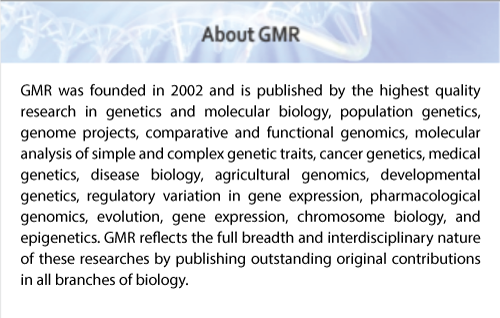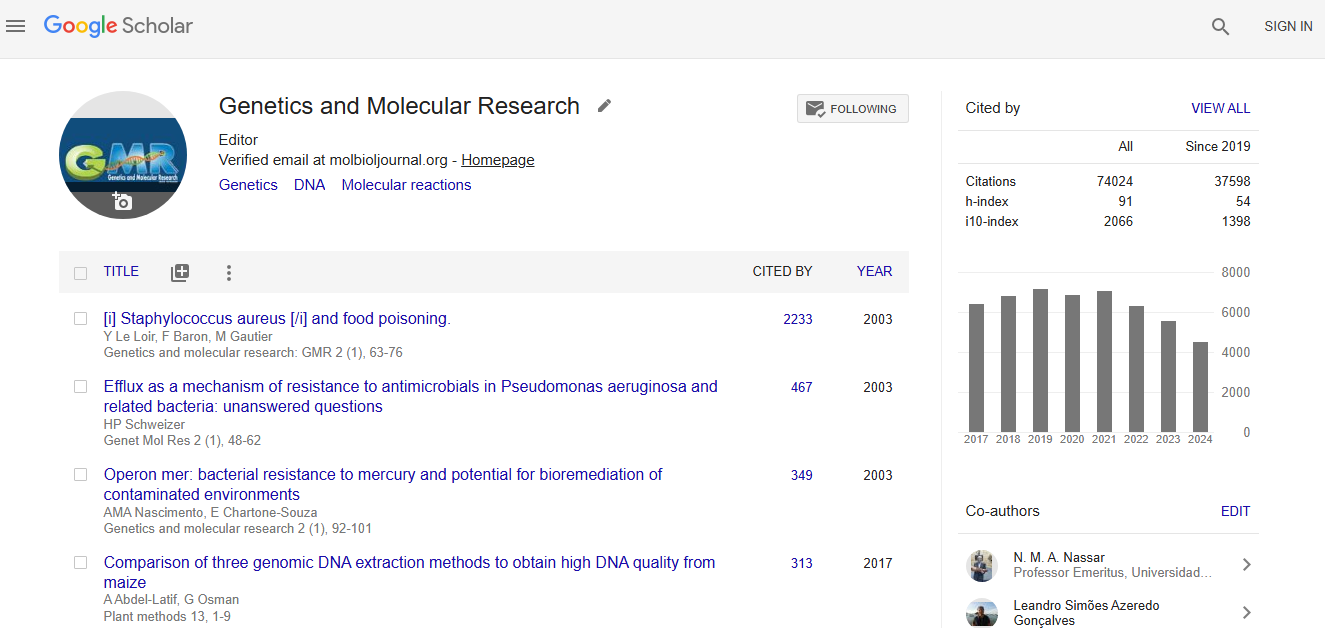Abstract
Isolation and characterization of 19 polymorphic microsatellite loci from the topmouth gudgeon, Pseudorasbora parva
Author(s): C. Zeng, Y. Gul, K. Yang, L. Cui, W.-M. Wang and Z.-X. GaoThe Asiatic topmouth gudgeon, Pseudorasbora parva, is recognized as one of the most invasive fish species in many countries outside of Asia. We isolated and characterized 19 microsatellite loci from P. parva. The polymorphism of these 19 loci was tested on 40 individuals of P. parva sampled from a wild population located in Ezhou, Hubei province of China. The loci had 5 to 11 alleles, with a mean of 7.7 at each locus; 11 loci conformed to Hardy-Weinberg equilibrium. The expected and observed heterozygosities ranged from 0.237 to 0.973 and from 0.647 to 0.914, respectively. All microsatellite loci were in linkage equilibrium. These microsatellite markers are potentially useful for the assessment of population genetic structure during invasion and dispersal of P. parva in new habitats.
Impact Factor an Index

Google scholar citation report
Citations : 74024
Genetics and Molecular Research received 74024 citations as per google scholar report
